Nutrition Critical: combatting food security in a post-pandemic world
In a world that produces enough food to feed its entire population, more than 1.5 billion people cannot afford a diet that meets the required levels of essential nutrients and over 3 billion people cannot even afford the cheapest healthy diet.[1] I believe this a travesty that can – and must – be urgently addressed.
Global hunger has been rising since 2014. Recent estimates put the number at 690 million people, or 8.9% of the world’s population. In 2019, close to 750 million—or nearly one in ten people—were exposed to severe levels of food insecurity. And around 2 billion didn’t have regular access to safe, nutritious, and sufficient food. At the current rate, there will be more than 840 people affected by hunger by 2030.[2]
And these estimates were before COVID-19, which has heaped unprecedented pressures onto an already failing system. As the World Bank states[3], “COVID-19 impacts have led to severe and widespread increases in global food insecurity, affecting vulnerable households in almost every country.”
So, how exactly has the pandemic affected the key drivers of food insecurity, and what can we do to combat famine and undernourishment?
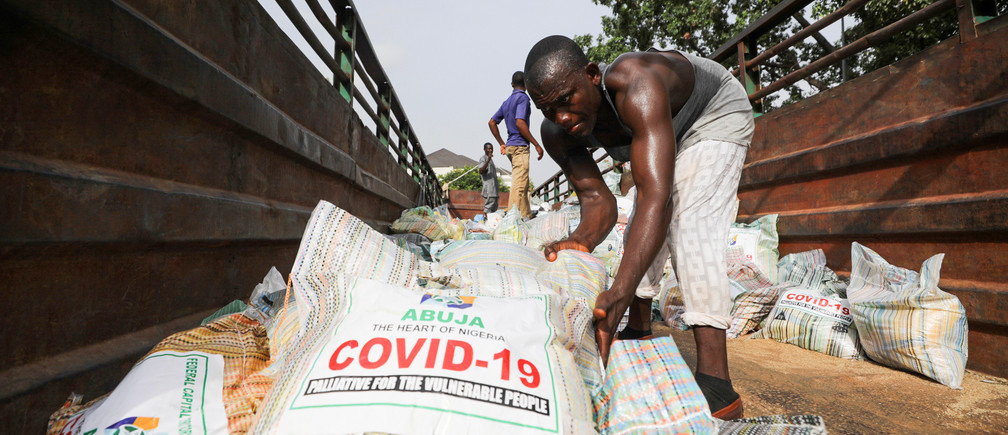
Photo Credit © Reuters/Afolabi Sotunde
What causes food insecurity?
Food insecurity can be categorized as chronic or acute. Chronic food insecurity is typically attributed to poverty. In other words, people who regularly cannot afford a healthy, balanced diet, or even one that meets their basic energy requirements. Acute food insecurity is defined as when a person’s life or livelihood is in immediate danger because of a lack of food. The primary causes of acute food insecurity are conflict, climate (including extreme weather events), natural disasters, supply chain disruptions, health and population displacement (including migration).
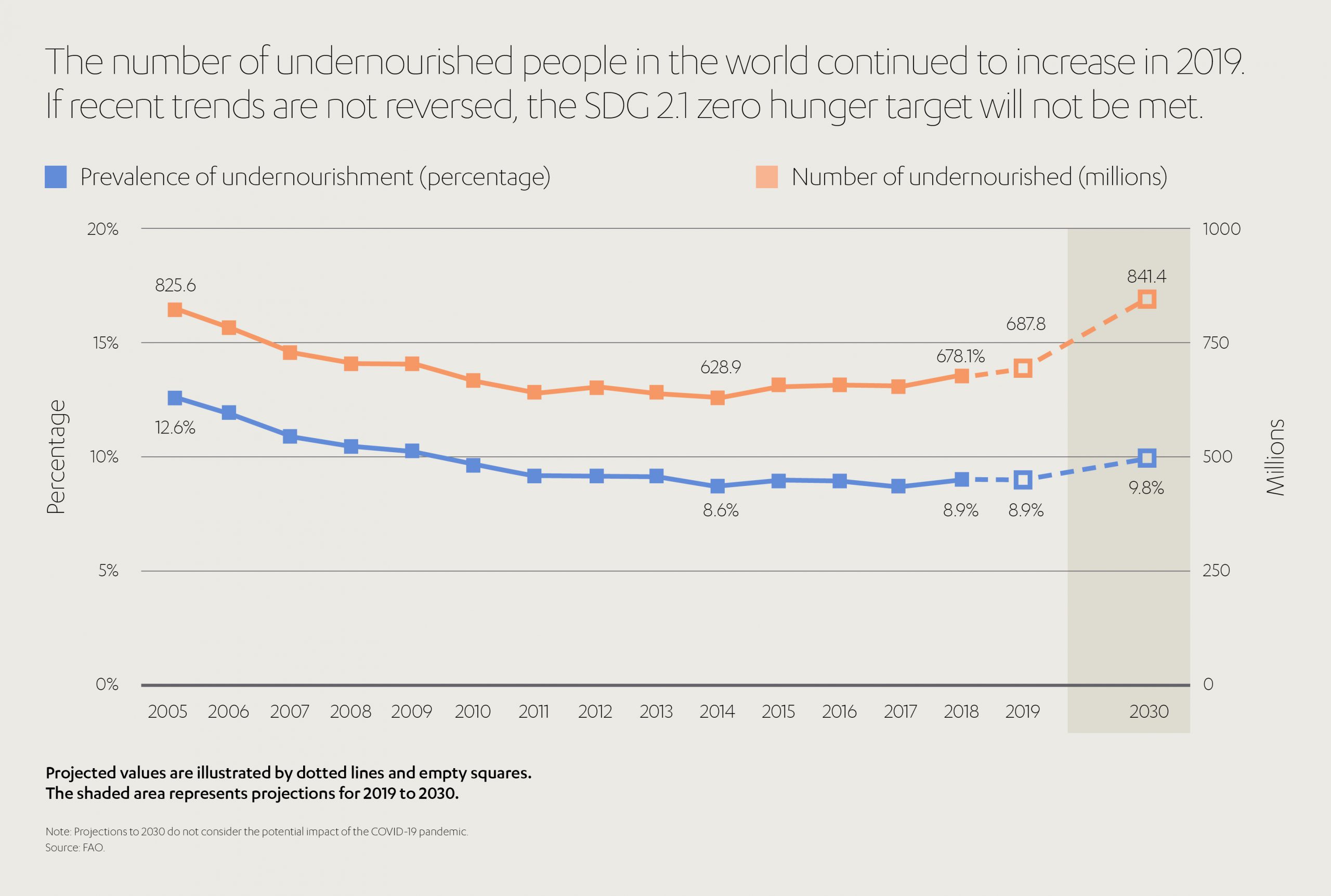
Unfortunately, many of these factors are mutually reinforcing: Conflict disrupts supply chains and leads to famine; famine breeds conflict, ill health and displaced populations, and so on.
For people who don’t have enough to eat, it’s especially disheartening to learn that 30% of the food we produce on the planet is never even consumed[4], a topic I explored in more depth a previous Spotlight article.
How has COVID-19 affected food insecurity?
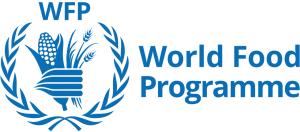 The United Nations World Food Programme (WFP) estimates that, in the countries where it operates, 272 million people are already or are at risk of becoming acutely food-insecure due to the aggravating effect of the COVID-19 crisis.[5]
The United Nations World Food Programme (WFP) estimates that, in the countries where it operates, 272 million people are already or are at risk of becoming acutely food-insecure due to the aggravating effect of the COVID-19 crisis.[5]
Such are the concerns that in March 2021, the UN Secretary-General, António Guterres, announced a task force to prevent famine.[6] Led by the Under-Secretary-General for Humanitarian Affairs and Emergency Relief Coordinator, and including representatives from WFP and FAO, the task force will aim to bring coordinated high-level attention to famine prevention and mobilize support for the hardest-hit countries.

“The upheaval that has been set in motion by the COVID-19 pandemic may push even more families and communities into deeper distress […] We have the tools and the know-how. What we need is political will and sustained commitment by leaders and nations,” said António Guterres at the launch of the task force.[7]
Disruption to food supply was always going to be a concern as the pandemic took hold. The 2007–2008 food crisis was still fresh in the memory, during which several key rice and wheat producing nations limited exports in response to broader global economic uncertainties, leading to food shortages, price spikes and civil disobedience in over 30 countries.
Fortunately, most major exporters have so far kept trade flowing between borders. However, there have been numerous disruptions to food travelling within countries, largely as a knock on effect from measures intended to curb the spread of the disease.[8] Closed freight lines led to rotting stocks in African depots, while lockdowns in India and Malaysia, which prevented all movement within and out of the country, forced farmers to dump produce or feed it to livestock because they could not transport it to urban markets. Fear of interruption to supplies also sparked panic buying in several countries. For example, Singaporeans cleared shelves of fresh vegetables, eggs and chicken, until government announcements and food trucks managed to reassure them that supplies would not be interrupted.[9]
Lockdowns and social distancing have also limited the availability of materials and labour to grow, process and handle food. North America, for example, has struggled with the reduced influx of migrant labour and Chinese farmers were in desperate need of fertilizers and seeds to plant crops for the following season, until the government made exemptions for “green channels”. Farm groups in various countries have warned that initial disruptions may result in reduced varieties of some crops and smaller harvests.
Fortunately, I’m pleased to note that recent global harvests have generally been good, which means we may escape the worst potential scenario.
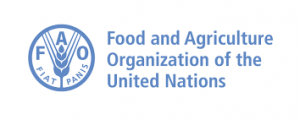 The Food and Agriculture Organization of the United Nations (FAO) estimates that a new global record for grain production was hit in 2020—some 2.7 billion tons of rice, wheat, corn, and barley.
The Food and Agriculture Organization of the United Nations (FAO) estimates that a new global record for grain production was hit in 2020—some 2.7 billion tons of rice, wheat, corn, and barley.
(There are some significant exceptions: East Africa is facing its worst locust outbreak in decades.[10])
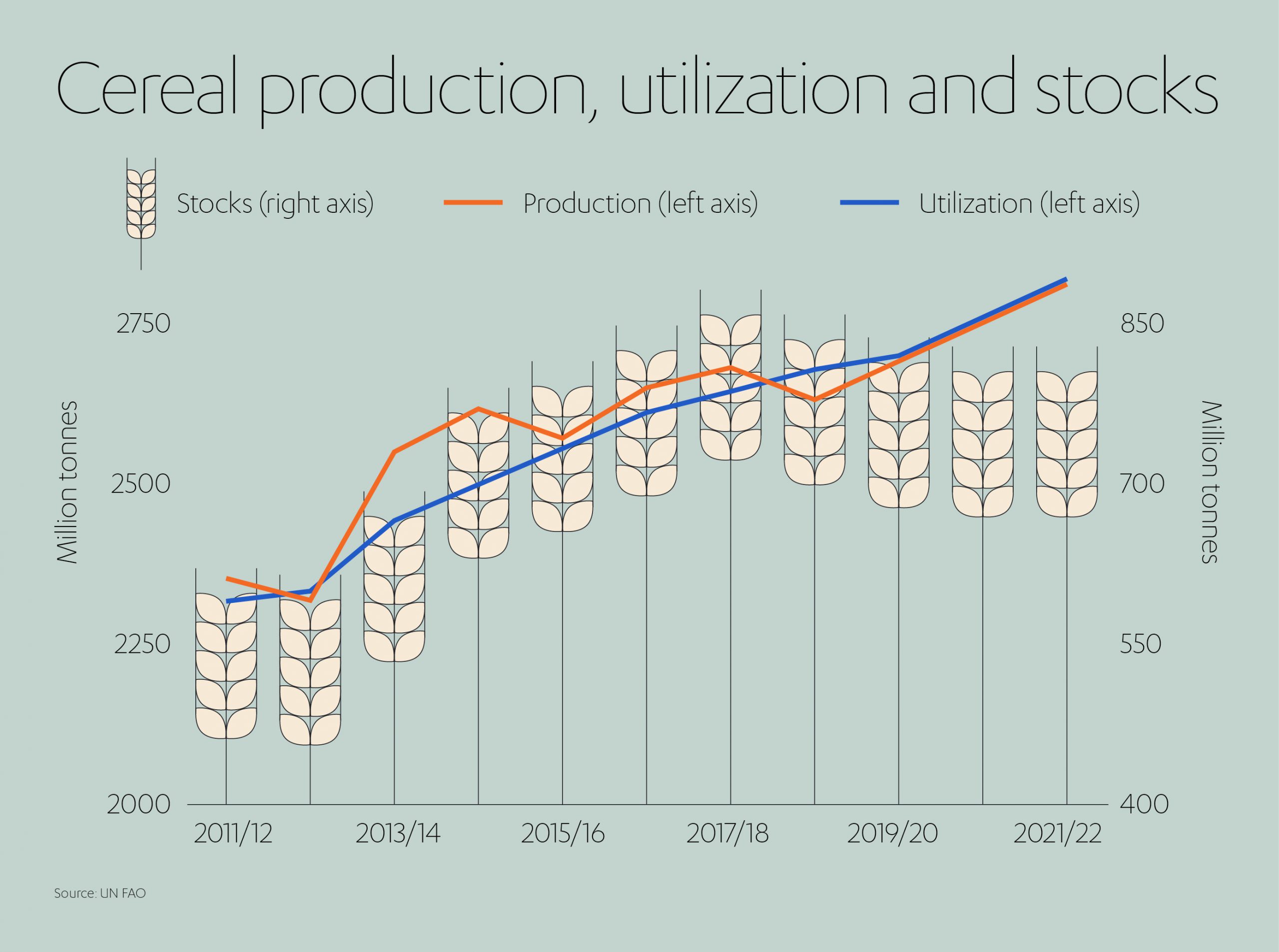
Furthermore, counter to predictions at the outset of the pandemic, global food prices have increased but, in most cases, have not spiked, as was feared. As of June 15, 2021, The Agricultural Commodity Price Index remained near its highest level since 2013. The rise can be attributed in part to the supply chain disruption caused by COVID-19, although it should be noted the figures remain well below those of the recession between 2007 and 2009.
Increased food prices on their own don’t account for the concern caused by COVID-19. Only when the loss of income is factored in does the magnitude of the threat become clear.
The global recession caused by COVID-19 is the largest since World War II. According to the International Monetary Fund (IMF), the global economy contracted by 3.5% in 2021.[11]
Lockdowns and social distancing have helped to counter the spread of the disease. They have also cost the equivalent of 500 million full-time jobs.[12] Those working in low- and middle-income countries and the informal economy have been hit worst. The United Nations Development Program estimates that COVID-19 will cost developing countries over US$ 200 billion in income.[13] The crisis has also lead to a 7% decrease in remittances—money transferred from foreign workers to families back home—which total around half a billion US dollars each year.[14]
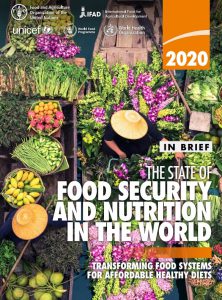 Higher food prices and lower, or nonexistent, incomes are a potent recipe for food insecurity.
Higher food prices and lower, or nonexistent, incomes are a potent recipe for food insecurity.
“Food supply disruptions and the lack of income due to the loss of livelihoods and remittances as a result of COVID-19 means that households across the globe are facing increased difficulties to access nutritious foods and are only making it even more difficult for the poorer and vulnerable populations to have access to healthy diets,” warns UNICEF in its “State of Food Security” report.[15]
The most vulnerable suffer the most
It is a worrying fact that COVID-19 has made life much harder for those already struggling. People in emerging economies already spend far more on food as a ratio of household income. For example, middle-class families in the United States only spend around 10% of their income on food. In many low-income countries, it’s closer to 50%. Moreover, in many regions affected by conflict, the price of a single meal can far exceed daily incomes.[16]
It’s not just people in the developing world, though. COVID-19 has made life harder for vulnerable people in wealthy nations, too.
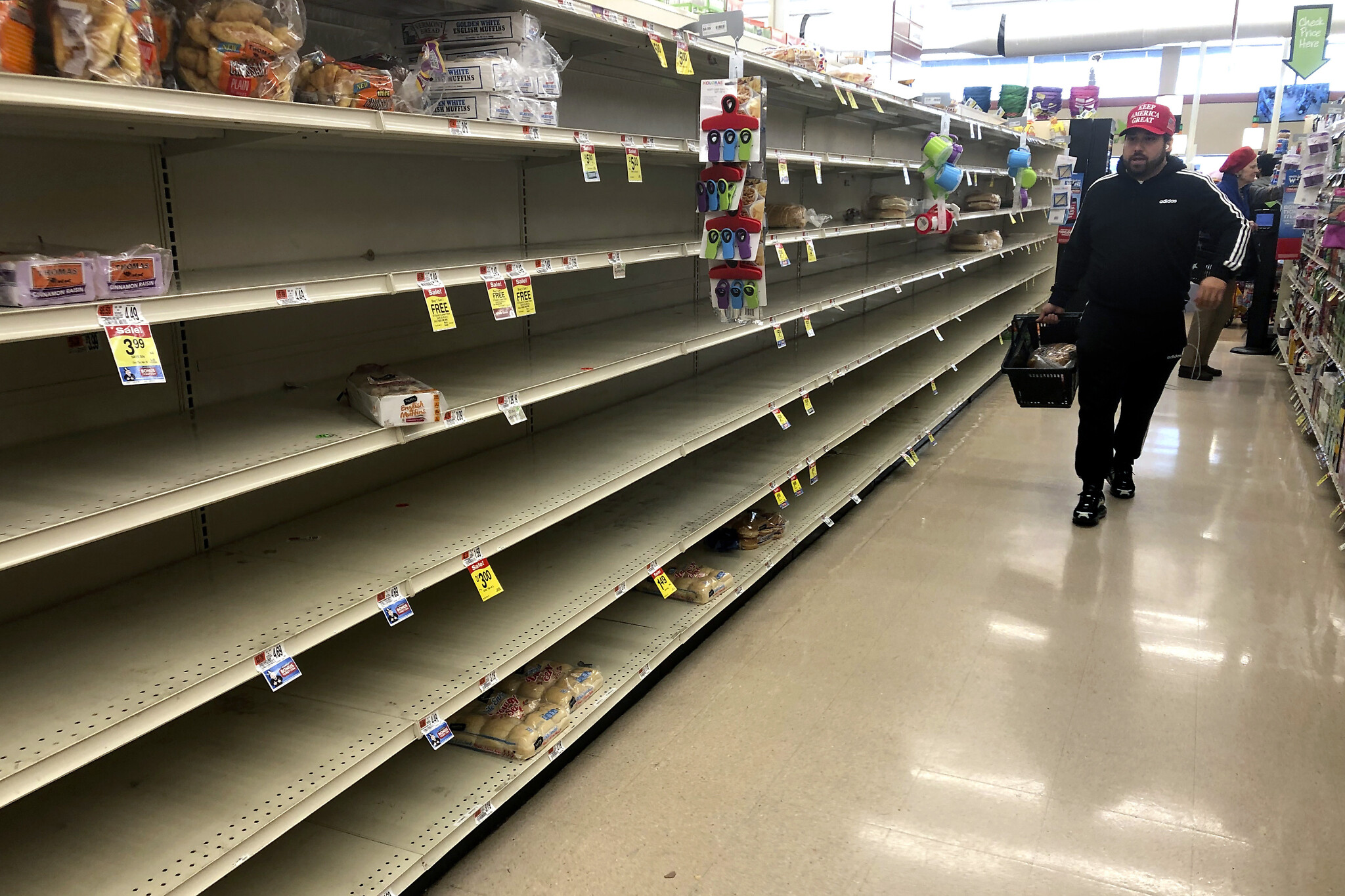
According to Northwestern University, 23% of American households have experienced food insecurity, almost twice as many as before the pandemic.[17]
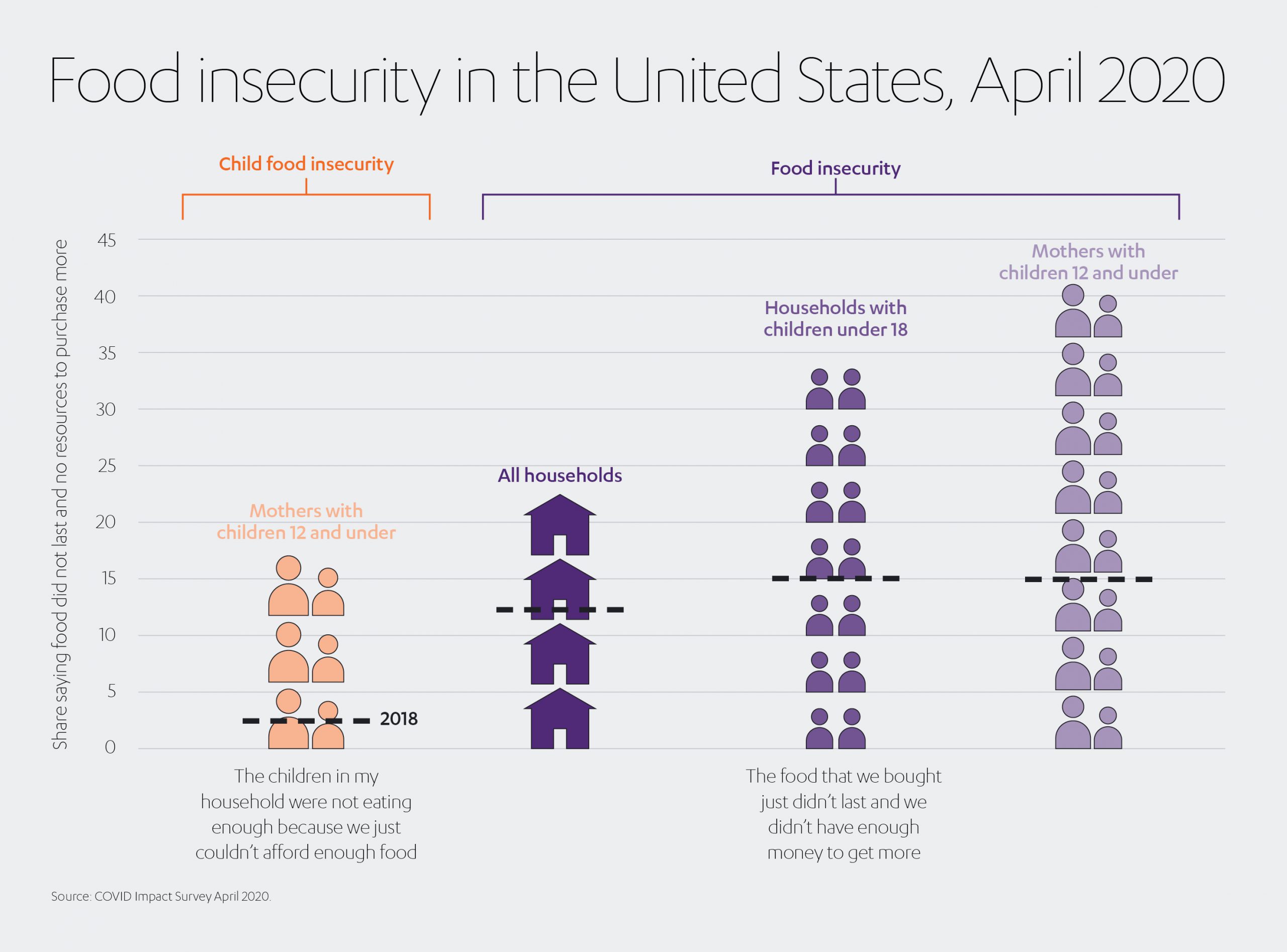
Food insecurity is more commonly associated with rural populations, but because COVID-19 has impacted jobs across the board, urban dwellers have been disproportionately forced into poverty—particularly in low- and middle-income countries that depend on tourism and have large numbers of informal workers.
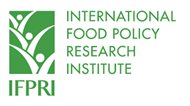 The International Food Policy Research Institute (IFPRI) estimates that poverty in sub-Saharan Africa is likely to increase by 15% in rural areas and 44% in urban areas.[18]
The International Food Policy Research Institute (IFPRI) estimates that poverty in sub-Saharan Africa is likely to increase by 15% in rural areas and 44% in urban areas.[18]
Harder to eat healthily
Starvation is not the only threat. When money gets tight, people tend to consume cheaper, less nutritious foods—favoring energy-rich starchy grains over more expensive, nutrient-dense foods like vegetables.[19]
According to UNICEF, healthy diets are estimated to be, on average, five times more expensive than diets that meet only dietary energy needs through a starchy staple.[20]
In addition to the economic crisis, COVID has also disrupted the complex supply chains which these foods need to stay fresh. Furthermore, school closures have meant that almost 39 billion school meals have been missed since the beginning of the pandemic, with 400 million students losing a critical lifeline.[21] A poor quality diet can lead to long-term health problems and more susceptibility to infection and disease.
It could get much worse . . .
Economic stimulus packages, debt deferments for low- and middle-income countries, and various safety net programs helped to avert the worst of the food crisis in 2020. Despite some notable exceptions, food supplies largely held up last year because governments heeded UN warnings about closing borders and setting tariffs, and harvests were generally good.
However, many people have exhausted their food reserves, cash, and family support and are thus more vulnerable to further food insecurity. The World Food Programme (WFP) warns that 272 million people face acute hunger today, up from 135 million last year.[22] “We are once again sliding towards the brink of the abyss,” warned WFP Executive Director, David Beasley, in March 2021.[23]
What can we do about it?
The two most significant threats to food security – conflict and climate – are complex longstanding challenges requiring global coordination. COVID-19 has made things worse but is, by comparison, a short-term problem that – with the right level of investment, commitment and collaboration – can be tackled through a variety of measures, such as:
- Better data: The more we know, the more we can help. As the WFP says: “The data community must adapt its tools to provide timely, reliable measurement of the impact of COVID-19 on food security and make the data easy to access, interpret and use by policymakers to enable them to make evidence-based decisions.”[24]
- Collaboration: Countries can combine forces to tackle the unique challenges facing each region. We’ve already seen promising developments in this area. In April 2020, the Gulf Cooperation Council (GCC) implemented an integrated food security network, began developing a strategic food reserve, and made investments in local agriculture.[25] Twenty-six Latin American and Caribbean countries also agreed to coordinate their support to ensure reliable access to food, confirming their commitment to “to act in coordination, exchanging information and good practices, and to adopt appropriate measures in accordance with the reality of each country”.[26] In June 2020, the African Development Bank launched Feed Africa Response to COVID-19, a “strategic roadmap to safeguard food security and create regional food self-sufficiency”. The African Continental Free Trade Area also made moves to establish more efficient and agile regional supply chains.[27]
- Cash: COVID-19 saw vast amounts of money injected into the economy by governments, banks, and international agencies. For example, the International Development Agency provided US$ 5.3 billion in new commitments between April and September 2020 for food security through a combination of short-term COVID-19 responses and longer-term investments to tackle persistent drivers of food insecurity.[28] However, most cash transfers to individuals were one-offs, and there are major shortfalls in funding. The WFP anticipates between US$ 6 billion and US$ 7 billion shortfalls this year. More money is needed while people get back on their feet.
- Future pandemics prevention: Over 70% of emerging infectious diseases (EID) originate in animals—and transmission of pathogens from animals to humans is increasing with deforestation, land-use change, and rapid population growth, a topic discussed in depth in a previous Spotlight article. Initiatives like India’s COVID-19 Emergency Response and Health Systems Preparedness Project will help to improve disease surveillance systems in humans and animals and health information systems across the country.[29] China has also launched a project to improve risk-based surveillance systems for zoonotic and other emerging health threats.[30]
- Reduce food loss/waste: Although so far COVID-19 has predominantly affected food access rather than food supply, any increases to supply will, of course, be advantageous—not least by helping to lower costs for the consumer. Around 70% of the world’s food producers are smallholders with little access to the technologies and methods to yield maximum crops.[31] The World Bank estimates that in sub-Saharan Africa alone, 37% of food produced is lost before it even reaches the consumer.[32] Anything that can be done to assist these producers will have a significant impact.
The diagram below illustrates food loss and waste per kilogram per capita across different global regions, both at source and consumer stages.[33]
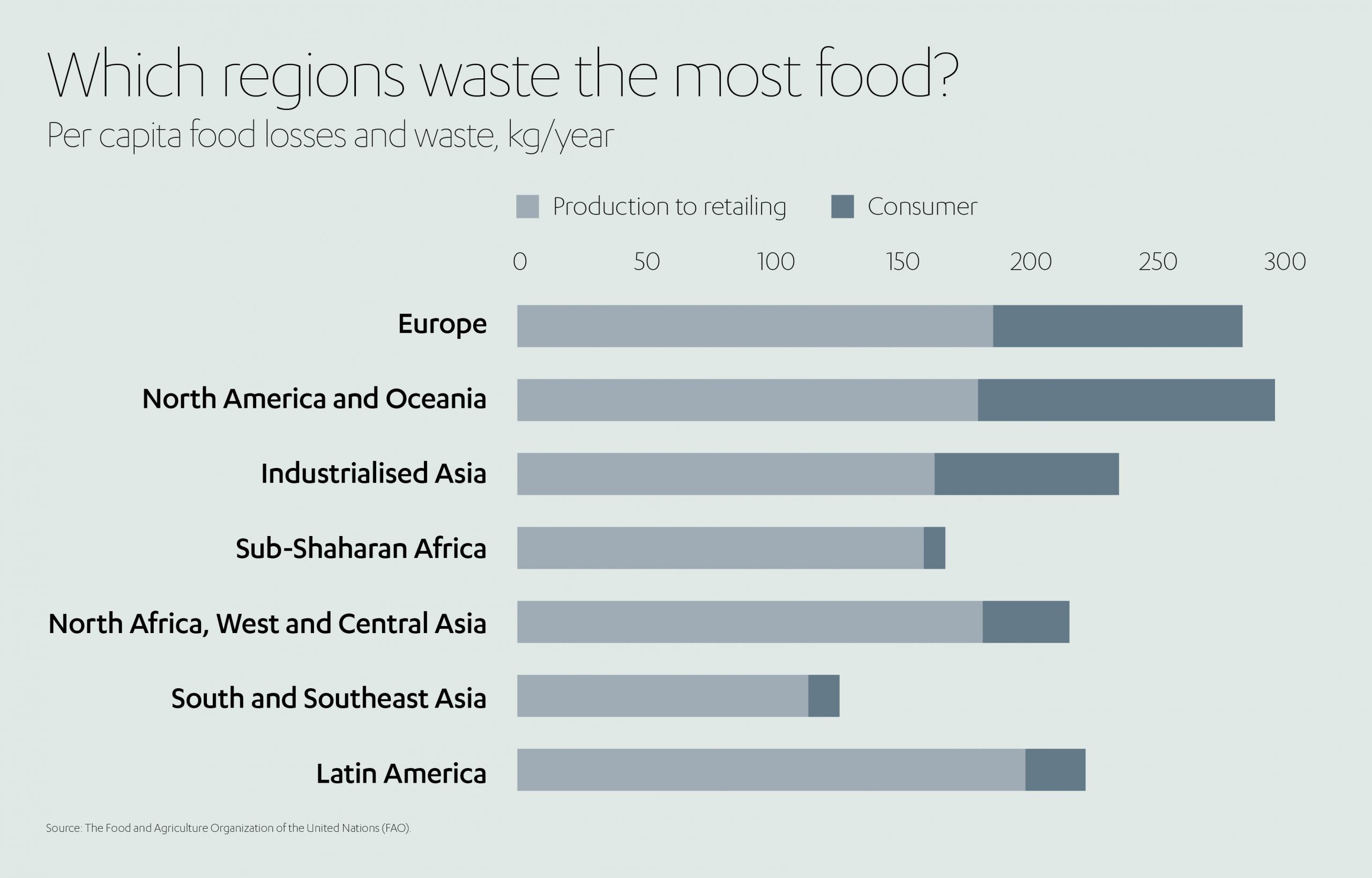
As the diagram illustrates, food loss is the biggest issue, largely due to inadequate storage at source and transportation to the retailer.
Investing in our future
Improving global food security is an area where the Jameel Family is already making a tangible difference, as part of its longstanding strategy of investing in the ‘infrastructure of life.’
![]() The Abdul Latif Jameel Water and Food and Systems Lab (J-WAFS) at Massachusetts Institute of Technology (MIT), for example, supports research, innovation and technology to ensure safe, resilient food and water supplies with minimal environmental impact. Since it was set up in 2014, more than 60 projects have been funded, generating more than US$ 12 million in follow-on funds to extend and expand their J-WAFS research[34].
The Abdul Latif Jameel Water and Food and Systems Lab (J-WAFS) at Massachusetts Institute of Technology (MIT), for example, supports research, innovation and technology to ensure safe, resilient food and water supplies with minimal environmental impact. Since it was set up in 2014, more than 60 projects have been funded, generating more than US$ 12 million in follow-on funds to extend and expand their J-WAFS research[34].
Much of the research supported by J-WAFS focuses on innovative techniques to make food and water systems in developing countries more effective, more efficient, more accessible and more affordable.
One example is in Kenya, where J-WAFS is supporting a project led by MIT professors Daniel Frey and Leon Glicksman to develop clay pot evaporative cooling chambers to preserve fruit using natural water evaporation, without the need for electricity.
Another project concerns research led by Tim Swager, the John D. MacArthur Professor of Chemistry at MIT, to develop fast, easy, and affordable food safety sensing technology. The research is based on specialized droplets — called Janus emulsions — that can detect bacterial contamination in food and liquids, such as water and milk. The technology could have huge benefits in less developed countries.
Metastasis in cows, for example, is a big problem for milk producers all over the world and can spread quickly through entire herds. India is a case in point. Milk from a number of different herds in a region will often be combined at a central location. If one herd has metastasis, the entire batch is spoiled and must be disposed of. Swager’s technology would be able to identify metastasis in an affected herd before it contaminates unaffected milk – thereby reducing wastage. This technology has already spun-out of the lab as part of the J-WAFS Solutions Program and the startup company, Xibus Systems, is developing protocols for field tests.
J-WAFS has also partnered with Rabobank in the annual Food and Agribusiness Innovation Prize, which recognizes innovators in the food supply chain. Prize-winning projects include a joint team from MIT and Tufts University which has developed a natural protein-based coating to preserve the shelf life of fruits and vegetables by up to 50%.
Food for thought?
COVID-19 has exacerbated longstanding drivers of food insecurity while creating unprecedented disruption and a global recession that has severely reduced the ability of millions of people to access and afford a healthy diet. The world has thus far avoided the worst predictions of famine but must remain committed to helping the most vulnerable through 2021 and beyond.
By taking timely action to strengthen global food security, we can not only reduce hunger and famine, but also address a range of other vital issues such as climate change, poverty, global health and sanitation.
Food is central to the future of our society, as reflected in its critical place in the United Nations Sustainability Goals. Its most direct contribution is to SDG 2 – Zero Hunger, but it is also fundamental to SDG 12 – Sustainable Consumption and Production, which has a target to halve per capita global food waste and reduce food loss by 2030 (SDG Target 12.3)[35]. To illustrate the wider impact, addressing SDG 12 also contributes to a further 11 of the other remaining 16 UN sustainability goals.

No single government, organization or company can ever hope to tackle these issues alone. It requires partnership and teamwork at every level, a collaborative approach that is central to Abdul Latif Jameel’s way of working. It is a challenge that we must accept – and in which we must triumph together – to provide a more sustainable, more affordable and more viable future for our society.
[1] The state of food security and nutrition in the world, UNICEF, 2020
[2] The state of food security and nutrition in the world, UNICEF, 2020
[3] Food Security and COVID-19 (worldbank.org)
[4] http://www.fao.org/save-food/resources/en/
[5] https://www.wfp.org/stories/wfp-glance
[6] https://www.un.org/press/en/2021/sc14463.doc.htm
[7] https://www.un.org/press/en/2021/sc14463.doc.htm
[8] https://www.scidev.net/asia-pacific/opinions/covid-19-another-wake-up-call-for-food-security/
[9] https://www.scidev.net/asia-pacific/opinions/covid-19-another-wake-up-call-for-food-security/
[10] https://www.worldbank.org/en/topic/the-world-bank-group-and-the-desert-locust-outbreak#2
[11] https://www.imf.org/en/Publications/WEO/Issues/2021/01/26/2021-world-economic-outlook-update
[12] https://www.ilo.org/wcmsp5/groups/public/@dgreports/@dcomm/documents/briefingnote/wcms_755910.pdf
[13] https://www.undp.org/press-releases/covid-19-looming-crisis-developing-countries-threatens-devastate-economies-and-ramp
[14] https://www.worldbank.org/en/news/press-release/2020/10/29/covid-19-remittance-flows-to-shrink-14-by-2021
[15] The state of food security and nutrition in the world, UNICEF, 2020
[16] https://cdn.wfp.org/2020/plate-of-food/
[17] https://www.npr.org/2020/09/27/912486921/food-insecurity-in-the-u-s-by-the-numbers
[18] https://www.ifpri.org/publication/covid-19-and-global-food-security
[19] http://www.fao.org/3/cb1000en/cb1000en.pdf
[20] https://www.unicef.org/media/72686/file/SOFI-2020-in-brief.pdf
[21] https://www.unicef-irc.org/publications/1176-covid-19-missing-more-than-a-classroom-the-impact-of-school-closures-on-childrens-nutrition.html?utm_source=twitter&utm_medium=socia
[22] https://www.wfp.org/stories/wfp-glance
[23] https://www.wfp.org/news/wfp-chief-calls-urgent-funds-avert-famine
[24] https://docs.wfp.org/api/documents/WFP-0000114546/download/?_ga=2.95744668.181467085.1597837110-1558960872.1597837110
[25] https://oxfordbusinessgroup.com/news/how-covid-19-honing-kuwait-s-focus-food-security
[26] http://www.fao.org/americas/noticias/ver/en/c/1269548/
[27] http://oxfordbusinessgroup.com/news/international-trade-year-review-2020
[28] http://documents.worldbank.org/curated/en/775981606955884100/Responding-to-the-Emerging-Food-Security-Crisis
[29] https://www.worldbank.org/en/news/press-release/2020/04/02/world-bank-fast-tracks-1-billion-covid-19-support-for-india?CID=SAR_EN_IN_NW
[30] https://www.worldbank.org/en/news/press-release/2020/06/18/china-new-project-to-reduce-risks-of-emerging-infectious-diseases-through-a-multisectoral-approach
[31] http://foodsustainability.eiu.com/wp-content/uploads/sites/34/2018/12/FixingFood2018-2.pdf
[32] https://www.worldbank.org/en/programs/africa-myths-and-facts/publication/is-post-harvest-loss-significant-in-sub-saharan-africa
[33] https://www.weforum.org/agenda/2015/08/which-countries-waste-the-most-food/





 1x
1x


 Added to press kit
Added to press kit